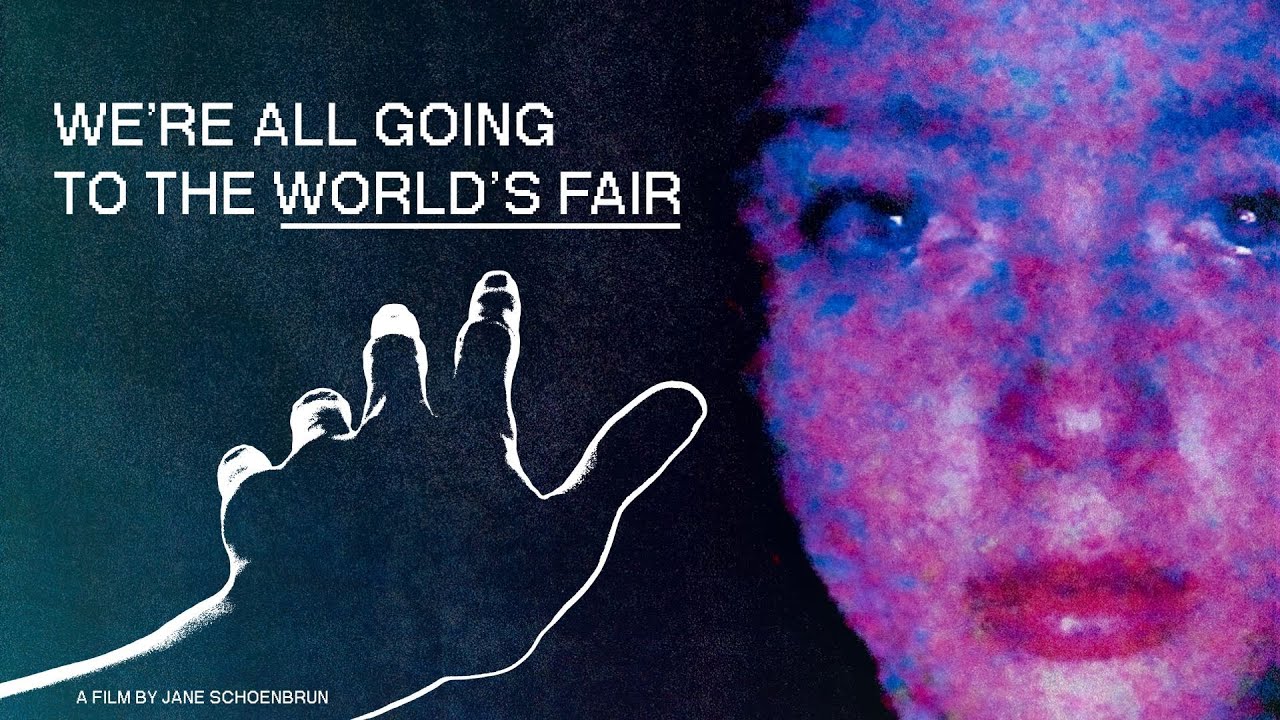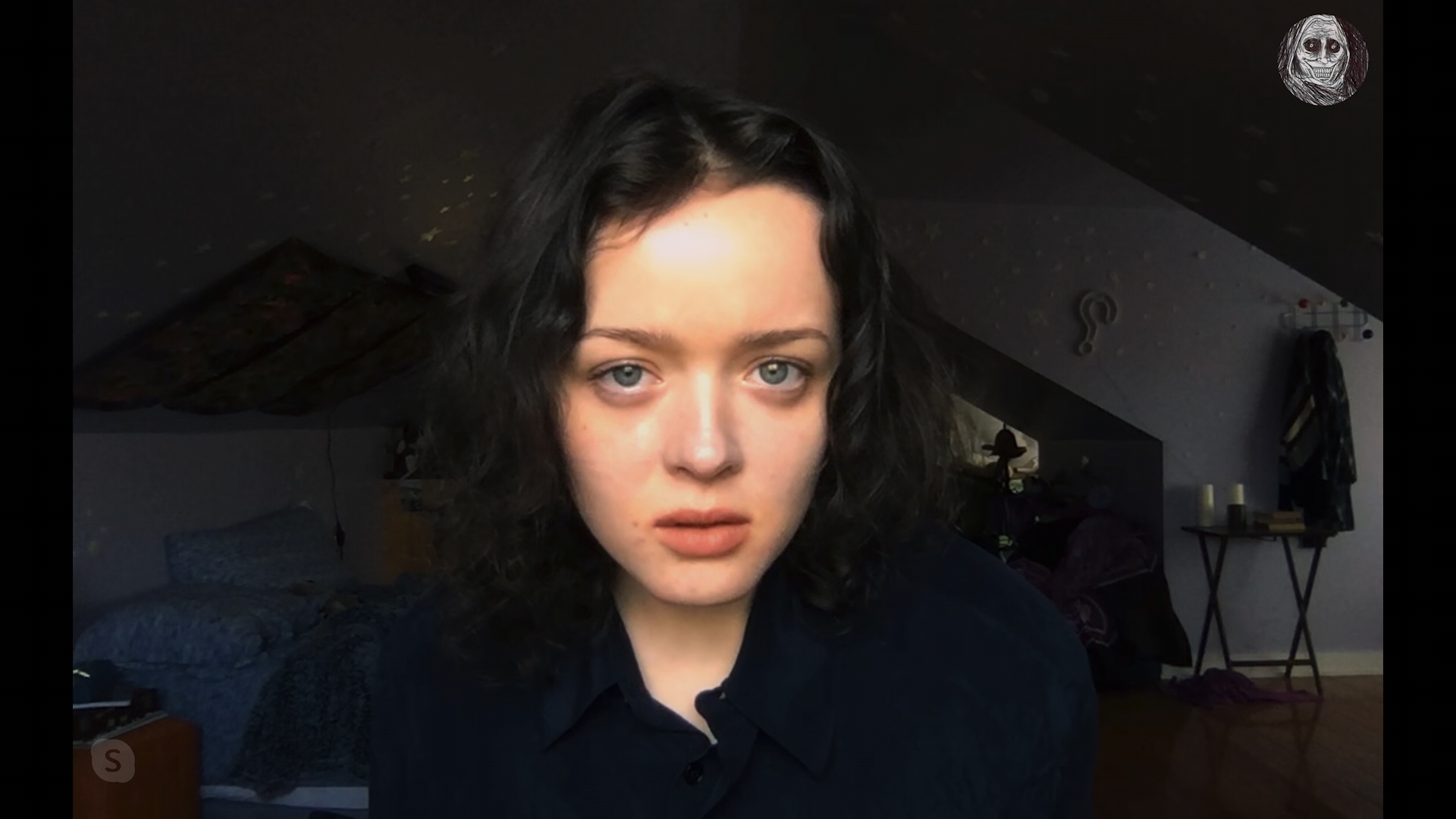
Continuing some of our movie coverage, we have We’re All Going to the World’s Fair, a character study about the internet, isolation, stranger danger, horror, role-playing communities, content creators, and more.
We’re All Going to the World’s Fair is a very introspective movie that only stars two characters, one of whom you see very sporadically throughout the movie. Our protagonist is Casey, an isolated teenager who runs a small YouTube channel.
Casey joins an online ARG/Role-playing game called World’s Fair, which proposes to turn real life into a horror movie for the participant. Anyone who joins the World’s Fair is encouraged to keep making videos about the changes they go through as the challenge progresses.
We’re All Going to the World’s Fair (2022)
Production: Dweck Productions, Flies Collective
Distributor: Utopia
Director: Jane Schoenbrun
Release Date: April 15th, 2022
The World’s Fair roleplay feels really cheap at first; the announcement video uses corny horror pictures and stock sound effects of people screaming, indicating it was put together in an amateurish way. It’s clear from the beginning that this is a fabricated thing, but the movie plays a lot with our expectations.
We’re All Going to the World’s Fair was originally going to be a constant stream of in-universe YouTube videos of people documenting their changes when joining the challenge, but as the movie progressed in the development, we got Casey’s story to piece everything together.
Remnants of this can be found in the movie, as Casey is constantly watching videos about the collaborative role-playing project, and through these videos we see other people reporting the changes they underwent after joining the World’s Fair, with varying degrees of quality.
One of the videos has a woman reporting that she sprouted black feathery wings, which clearly are just a prop; in another video, we see a Marble Hornets-style web series, where someone joins the World’s Fair and is dragged inside of their computer by ghostly hands.
Some of these segments are actually done by real-life YouTubers, and while these segments vary in quality a lot, it’s through one of them that we get some of the movie’s only actual horror content.
One of the in-universe YouTube videos features a man who joins the World’s Fair challenge and finds himself losing his mind. It has a really simple body horror effect that becomes really effective due to his acting, and it’s probably the highlight of this movie’s horror-wise.
As much as We’re All Going to the World’s Fair deals with horror content, it’s actually not a horror movie. It does have unnerving moments by using Casey’s descent into the role-playing game, but it’s never actually scary.
Anna Cobb delivers a fantastic performance as Casey; it’s awkward and really true to how aspiring YouTubers make content. It’s just the right amount of corny and incompetent without being annoying or (too) embarrassing to watch.
It’s clear that the World’s Fair is just a viral sensation, maybe with a hint of stranger danger since player-to-player communication is highly encouraged, but we are never really sure about where Casey stands in all this.
My initial theory while watching the movie was that Casey suffers from multiple personality disorder and is having her mental condition exacerbated by the internet, which is pretty close to what the movie implies in its ending.
It does play around with the angle that maybe Casey could actually be possessed and the World’s Fair is completely real, but that angle never really sticks, and I’m glad it doesn’t, because it would be a terrible cop-out to have Casey really be possessed by some internet demon.
Eventually, Casey’s videos are discovered by JLB, a much older man who only speaks in character for most of the movie. He never shows his face to Casey and engages her in a completely serious manner pertaining to the World’s Fair.
Casey eventually starts producing 10-hour-long videos of her sleeping, where in the middle of the night she seems to wake up possessed. She sends these videos to JLB, who remains in character and plays along, saying he’s worried about Casey.
JLB is a really weird character in this movie; we get glimpses of him throughout the entire thing, and he’s a much older man, sitting in what looks like a teenager’s bedroom. His presence in the movie actually mimics an encounter the director had with a man in an online chatroom.
[…] I posted a lot on this site, and I eventually developed a weird relationship with this older man who would comment on a lot of my stories. He kind of browbeated me into a relationship over IM [instant message]. He was really emotionally needy, and I was this thirteen-year-old kid who knew I shouldn’t be talking to this guy. […]
As the movie progresses, we keep getting more videos from Casey and JLB’s input on them. This eventually leads to a video where Casey records herself going to a shed near her house and uncovering her father’s gun, quickly putting it back in place.
The following videos have Casey stating that she plans on killing her father, saying that he simply has to go. Casey also talks a lot about disappearing as she wanders alone through town, making videos to post on YouTube.
Eventually, a concerned JLB breaks character and asks Casey if she knows that the World’s Fair is just an online role-playing game. The expression in Casey’s face really sells this moment, as if a thin glass pane that separated her from reality just shattered before her very eyes.
Casey looks hurt but tries to hide it by feigning indignance, claiming that she of course knows it’s a game and that she didn’t plan on doing anything she spoke about, fully aware that it was all fiction.
This is the last we see of Casey, as she completely cuts ties with JLB and doesn’t show up for the rest of the movie, which just leaves us with a view of JLB, alone in a teenager’s room. He tries to contact Casey afterwards, but she never responds.
The movie ends with a monologue by JLB, presumably some time after this happened. He speaks about meeting Casey and how she underwent a mental health scare that she has now recovered from. He speaks fondly about hugging her and claims that they sat down, had coffee, and said their goodbyes to each other, planning to meet again to talk some more.
JLB’s presence in this movie really weirds me out; you never have any sort of confirmation on what his motives really are, but the way he speaks about hugging Casey makes me doubt his intentions were good.
We are never actually shown if this meetup happened, and the shot of JLB’s monologue is framed in such a way that it almost feels like he’s making up this story to feel better about the conclusion of his interactions with Casey.
His presence in the movie is really predatory in nature, especially with how he sits through hours and hours of videos where Casey is sleeping. The teenager’s bedroom he’s in could indicate that he lost his son and now seeks to emotionally replace him with another teenager online, but it’s hard to know for sure.
Something to note is that JLB’s profile on Skype is the Unwanted House Guest, a drawing depicting a terrifying home invader at the foot of someone’s bed. The movie is full of these references to internet horror, even including the very weird soup.avi as one of the videos recommended to Casey.
I appreciate the amount of knowledge that the director had about internet culture when making the movie; this movie could have only been made by someone who experienced these things, as portraying the internet with such pinpoint accuracy is no easy feat.
That said, We’re All Going to the World’s Fair features some glacial pacing. It’s a hard movie to sit through simply because nothing happens in a lot of scenes. It’s a very deliberate movie when it comes to moving its plot forward, but it borders on uneventful.
It does have some really good shots, and I especially like how the camera always anchors down whenever Casey is being recorded, usually framing the viewer as the screen or by having us look at Casey through the video recording playback on her computer while she’s outside of frame.
It is a tough sell to call this movie horror, though, since it’s more suspenseful than scary. It does feature some unnerving moments, but the only bit of horror we do get is through an in-universe YouTube video, which hardly counts.
The director has gone on to state that We’re All Going to the World’s Fair has both themes of transitioning and coming-of-age, and while the coming-of-age themes are easily present, I can’t spot anything about transitioning no matter how hard I try.
Maybe it’s because I haven’t really dealt with anything similar to this, but I’m yet to see anything pointed out that implies Casey is actually going through some sort of gender identity crisis/change, which leads me to think that the director is maybe projecting their own experiences onto the movie.
I liked We’re All Going to the World’s Fair, it’s a very realistic portrayal of the internet and how isolated one can be despite connected to the whole world. It’s a really good character study of an entire generation that got lost in their little online worlds and maybe got a bit too detached from reality.
It’s a really good movie that hurts itself by being marketed as a horror. It can be uneventful at times, but it’s an interesting ride from beginning to end. Casey’s character definitely resonated with me more than I would have liked, especially since I grew up as a chronically online teen as well.
We’re All Going to the World’s Fair is available on Amazon Prime Video, to buy or rent digitally. It is also available physically as a Blu-Ray on Amazon.










